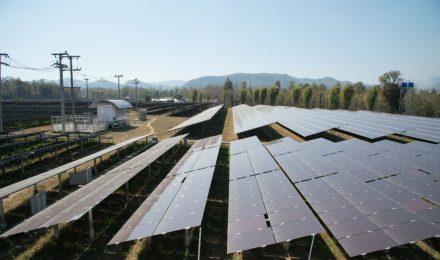The environmental and economic benefits of reducing dependence on traditional energy sources have attracted significant attention to solar power as an alternative. This post provides an overview of how solar power works, the advantages it offers, and the challenges it faces in becoming a dominant player in the energy landscape.
1. What is Solar Power?
Solar power is a renewable resource that harnesses sunlight to produce clean electricity. Solar panels take advantage of the photovoltaic effect, which describes the force that occurs when certain materials are exposed to light. In simple terms, photons from sunlight hit semiconductors in solar panels, which generate electricity. Solar panels come in various sizes, and installations can be designed to suit almost any surface or building design. The systems can include storage batteries, inverters, and components that manage the flow of electricity.
2. Advantages of Solar Power
The fact that sunlight is free and abundant makes it a reliable source of clean energy. Today’s technology captures and stores solar power even when the sun isn’t shining. The associated costs are low, and the systems are becoming even more efficient.
Minimal Maintenance
Many renewable energy systems require regular maintenance and upkeep. However, solar panels require little or no supervision, depending on the specific type. Systems installed on rooftops can be cleaned by sweeping or hosing off dust and debris. The systems are also durable and long-lasting as they are properly maintained.
Environment Friendly
Solar energy uses no harmful chemicals or pollutants that harm the environment. This also means it does not produce CO emissions, which concern many living near large power plants. While solar energy does not release heat, it absorbs some heat that would otherwise be trapped in the atmosphere. This can help moderate temperatures and lessen the impact of greenhouse gases on global warming.
Solar power reduces the overall effect of fossil fuel consumption by creating a sustainable alternative. Because it generates clean power without the need to mine, process and burn fuels, it is one of the most minor emissions-intensive energy sources.
Energy Isolation from the Grid
Solar panels can be used as a standalone system when equipped with an inverter and some storage batteries. They are ideal for remote locations, off-grid homes, and locations that do not have access to traditional electricity grids. Because solar energy does not need to be stored, there is no energy loss during transmission and distribution.
Low Cost
The cost of solar panels is declining dramatically as technological innovations are introduced. Solar power has come a long way since its inception. The technology has significantly improved, including introducing storage batteries and other components that allow self-consumption. Solar systems are also increasingly affordable, with prices dropping, so many households can finally afford them.
3. Challenges Facing Solar Energy
Solar installations face commonly accepted challenges affecting all new energy technology. These include consumer acceptance of new systems, potential changes in incentives and regulations, and regulatory barriers such as net metering and tax policies that discourage the installation of solar panels.
4. How Solar Power is Being Used Today
Although solar power accounts for only a small fraction of energy production worldwide, it will likely become a significant energy source in the coming years. According to the International Energy Agency, the pace of solar energy installations has increased dramatically in recent years.
Industrialization
The ability to store surplus energy makes solar a viable option for peak-load situations. This allows power plants with the appropriate equipment to take advantage of the consistent, predictable sunlight that exists during the day and throughout the year. This can be especially important in remote locations where reliable access is limited and mechanical backup systems are impractical or unavailable.
Irrigation
Solar power is ideal for pumping water from wells and canals. This can be especially important in areas that experience regular droughts or where predictable seasonal changes leave crops at risk. It’s also an efficient way to supplement existing water sources with additional water and nutrients when needed.
Water Heating
Solar power is an excellent way to heat water without increasing the cost of energy. This is particularly important in areas with a cold climate, where conventional systems such as propane and electricity can be expensive. Swimming pools, spas, hot tubs, and other water sources are heated with minimal costs.
4. The Challenges of Solar Power
While solar power is likely to become more widespread, problems that could hold it back from being a dominant energy source still need to be solved. The biggest challenge is the cost of solar panels since they are relatively expensive. Given the rapid rate at which new technologies and materials are entering the market, prices should decrease over time, but this will be significantly slower than the rate of technological advance. There are also concerns about technology issues, such as weather and climate change causing unexpected damage to solar panels.
5. The Future of Solar Power
Solar power will likely thrive as more people realize its benefits. As solar energy technology improves and costs decrease, more homeowners can afford it. Government incentives will also entice more people to invest in solar power. Even with government backing, however, solar power may not be able to compete with other forms of energy production in terms of cost and convenience. It will likely remain an essential part of the world’s energy mix for some time, but its actual size and impact on the global energy supply remains to be seen.
6. New Innovations in Solar Energy
Solar energy innovation has been a major focus of the innovating community, with several notable breakthroughs in recent years. One example was the introduction of new solar cells that were much smaller and more efficient than previous models. This made them suitable for use in small devices such as cell phones. Another advancement was the creation of photoelectrochemical cells, which can convert heat directly into electricity. These cells could be used in new solar-powered refrigeration and desalination systems.
7. Why Solar Energy is Taking Over Main Source of Energy
Solar energy research and development is an area that has seen significant investments by government, non-profits, and private sector interests. This includes forming organizations, initiatives, and programs dedicated to furthering solar energy technologies. The goal is to make solar power a mainstream energy source and improve its appeal to consumers through increased efficiency, reduced costs, and introduction of storage batteries. The Office of Energy Efficiency & Renewable Energy (EERE) is a major American government initiative funded by the Department of Energy (DOE). It has many projects on utilizing solar energy.
Solar energy is a clean and renewable energy source that will likely become more widespread as technology improves. As countries become increasingly concerned about climate change, they seek ways to reduce carbon emissions and eliminate other environmental pollutants. Solar power can help achieve these goals and has virtually no negative impact on the environment.
Solar power has the potential to be a large source of energy in the future, and its use will likely increase as the cost and size of solar panels decrease. Despite the problems associated with solar energy, it is already a major energy source in many parts of the world and represents a substantial part of America’s future.



